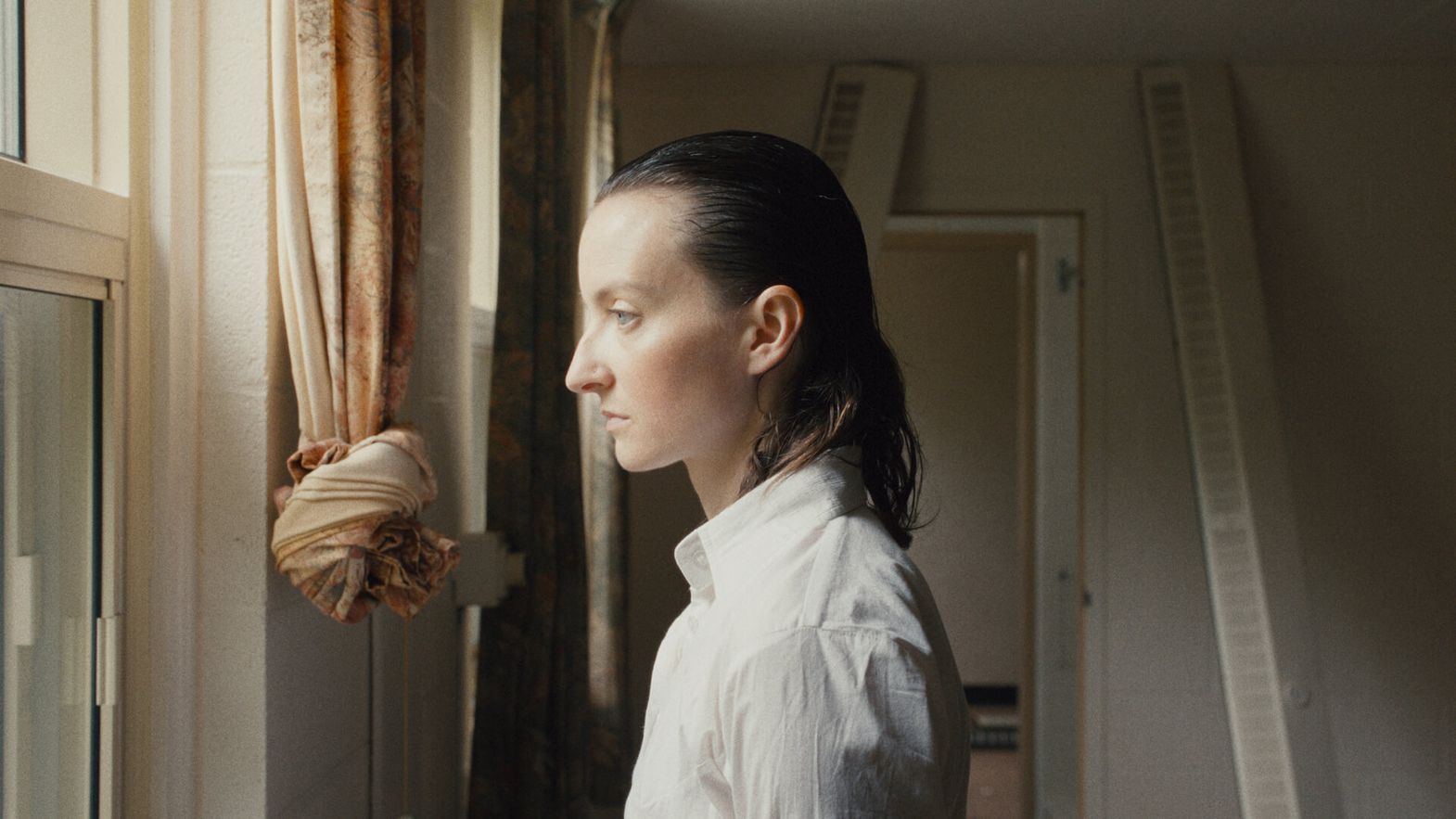 © Vincent Biron
© Vincent Biron
Sparse and aseptic spaces, a minimalist and meticulous staging, a mysterious woman who lives in the shadow of unfinished walls who asks herself existential questions about the meaning of life and the link between space and time. It is through this Kafkaesque influence aiming for the absurd and the grotesque that Denis Côté presents his latest effort in the Fuori concorso section, giving us a fresh, surprising and wittily distressing film.
A woman confined within these ghostly spaces hears a sudden noise that tends to creep into her thoughts. She decides to call someone to tell them what happened and seek explanations, but the conversation takes an existential turn and the woman begins to question the meaning of life by relating to her own loneliness. This is the motivation for addressing a discourse which – cleverly – is never mechanical and tiring, but rather amusing and unusual since it starts from childish curiosity and ends up reflecting on issues that involve all of us.
Mademoiselle Kenopsia is a work capable of fostering such a rare identification that the speeches resonate perfectly in the minds of the audience. To be clear: there is a five-minute sequence about a cigarette being smoked and the analysis of this vice defines time in space through the observation of the movement of the smoke around the room. Each sequence is constructed in order to realize how we are not the architects of our life, of the volatility of the latter and of the vanity of memory.
Denis Côté takes the first ten minutes of the film to familiarize the viewer with these empty and arid spaces, which tend to evoke a feeling of loss and incompleteness, as if they were part of an deserted construction site. A perpetual abandonment that defines the state of mind of the protagonist, who in the perdition caused by her loneliness imagines encounters that can provide an answer to her persistent state of suspension, waiting for something to happen.
The production design, in line with meticulous cinematography and minimalist staging, gives life to a world confined within the walls of these buildings but one which remains large and never oppressive, despite the windows filtering any search for contact with the outside world. It’s a microcosm that represents an inextricable human condition, which never makes us feel complete, and makes us realize that we will never have the much-desired answers to our questions. The screenplay is largely written in the form of a monologue, even if the recipient remains undefined, but it is thanks to this form of expression that the viewer can identify with the protagonist. In the few dialogues present there are shots and reverse shots designed to abandon and isolate the subject from the surrounding space to allow them to reflect on their oppressive human condition. Everything is filled with an electronic soundtrack, often in counterpoint, which winks at sci-fi, evoking even more of a sense of the immense and the absurd.
Mademoiselle Kenopsia can represent many states of anguish belonging to human destiny. Closed spaces represent the immensity of what we do not know and will never know. But the human condition keeps us curious, and consequently it knows no boredom, and this is one of the greatest virtues that is intrinsic to us. Enjoy this movie and embark on a journey into the humble beauty of our lives!
Alessandro Panelli